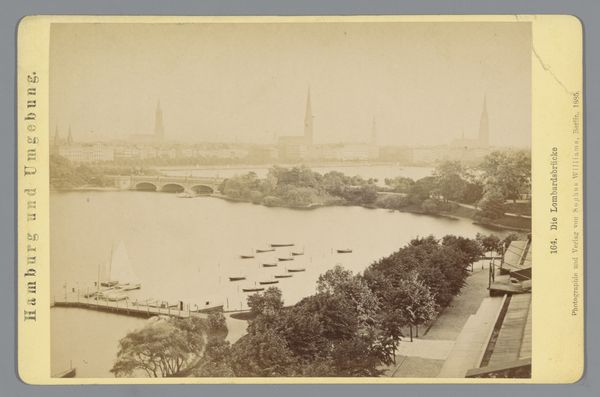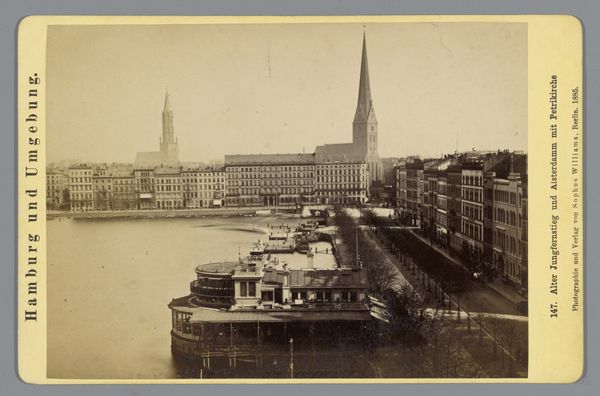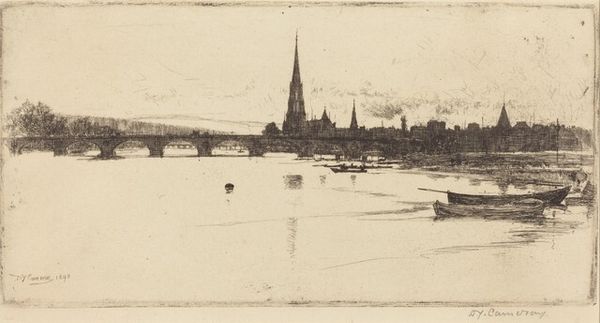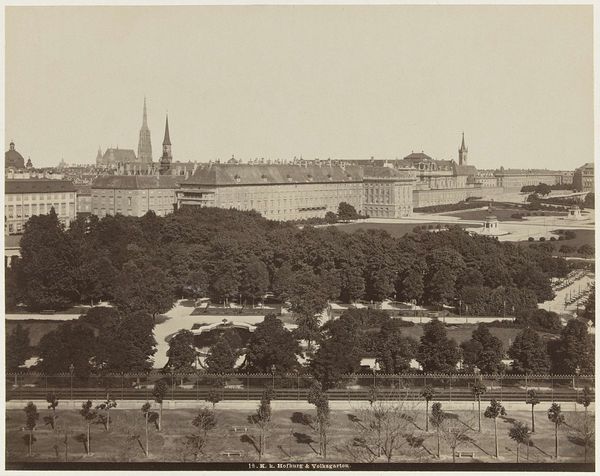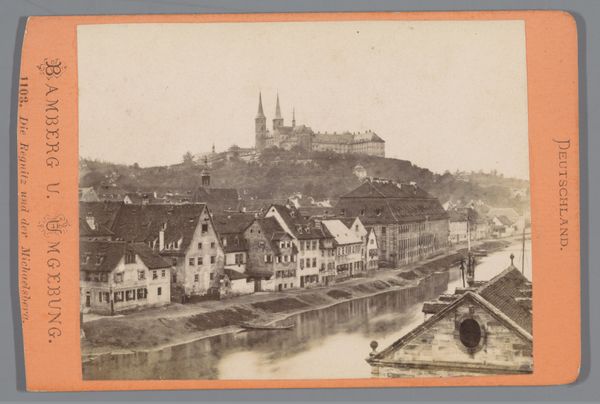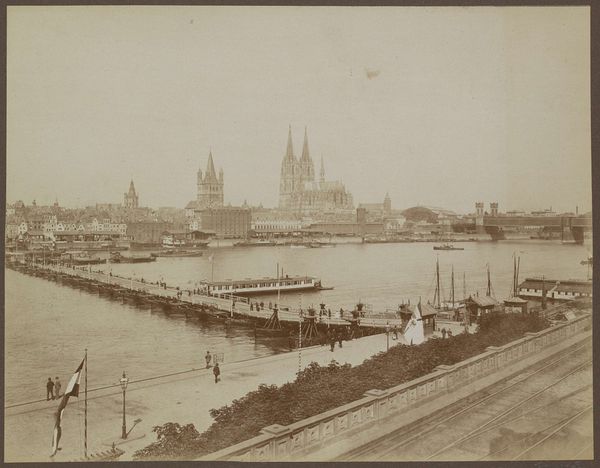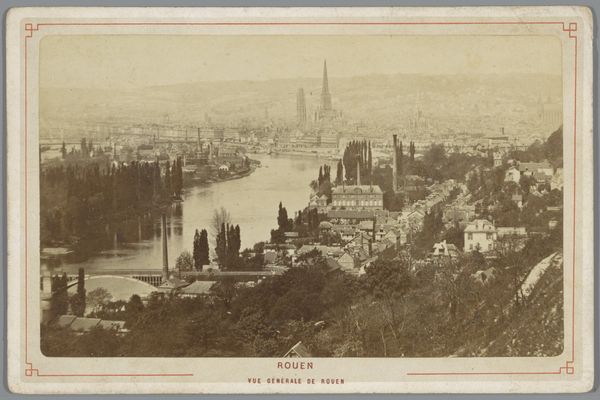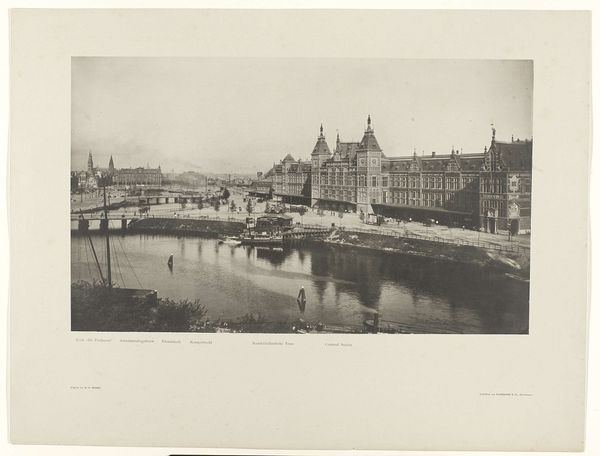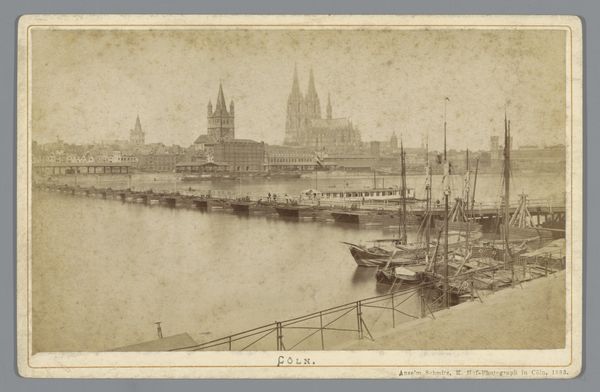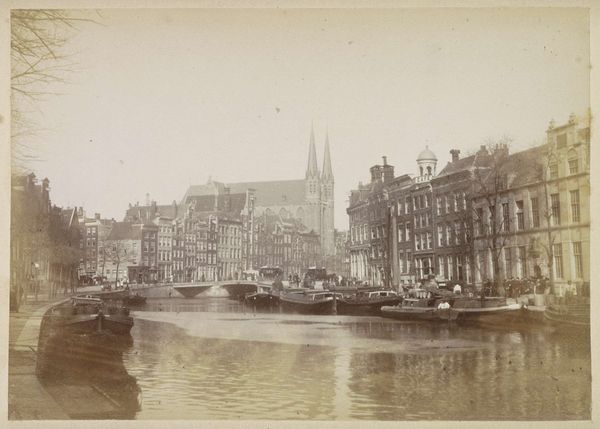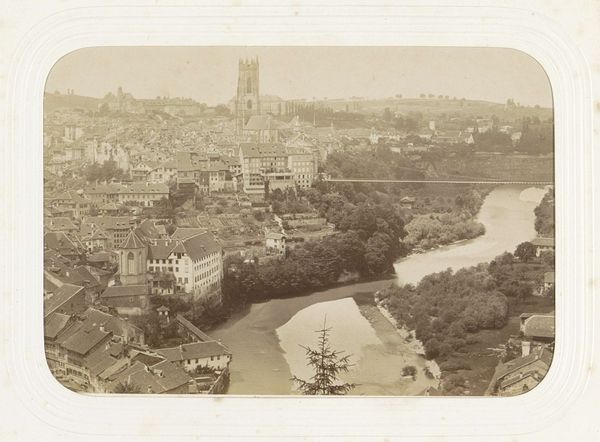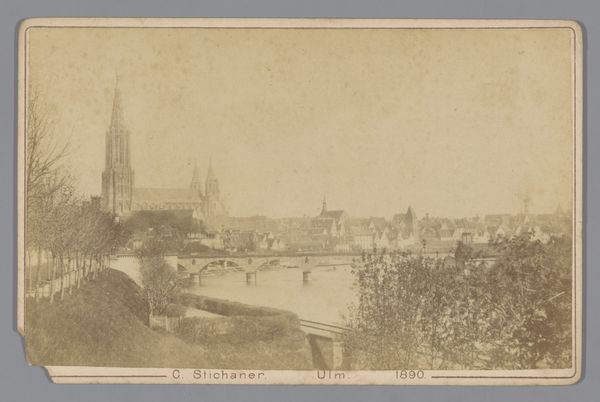
Gezicht op Rouen, gezien vanaf de kerktoren van de Église Saint Sever 1863 - 1900
0:00
0:00
photography
#
river
#
outdoor photograph
#
outdoor photo
#
outdoor photography
#
photography
#
historical photography
#
cityscape
Dimensions: height 214 mm, width 277 mm, height 316 mm, width 401 mm
Copyright: Rijks Museum: Open Domain
Editor: So, this is "Gezicht op Rouen, gezien vanaf de kerktoren van de Église Saint Sever" by Neurdein Frères, taken sometime between 1863 and 1900. It’s a photograph and what strikes me is the emphasis on industry and commerce right up against the backdrop of these stunning cathedrals. How do you interpret this work? Curator: I see this photograph as a document of burgeoning capitalism. We have the means of production - the river for transport, those goods waiting to be shipped, and even the very process of photography. Consider the labor involved in creating this image – the chemical processes, the physical act of carrying equipment, and the strategic act of composition. This was a commodity, meant for consumption. Editor: A commodity? I hadn't thought of it that way. So, the choice of subject – the cathedral juxtaposed with industry – is it intentional commentary or just documentation? Curator: Perhaps both. The cathedrals represent established power, tradition, and faith, while the riverfront signifies emergent economic forces. The contrast isn’t just visual. What materials are depicted and how are they presented? We see stone, water, and goods waiting transport alongside photography, whose inherent materiality—the paper, chemicals, and light exposure used to produce it—records and potentially challenges social structures. Consider that it’s shot from a high vantage point; do you think that’s happenstance? Editor: It suggests a kind of detached observation, or perhaps even control. Are we, as viewers, meant to survey this landscape like the rising bourgeoisie? I see how the industrial elements are more than just background; they're integral to the image's meaning. Curator: Precisely. By focusing on the materials and production of this image and the scene depicted, we move beyond aesthetics and engage with the socio-economic forces at play in late 19th-century Rouen. Editor: I’m now realizing that something as simple as an old photograph is more of a social commentary of that era, by documenting their means of production. It provides us insights on power dynamics beyond its beautiful aesthetic.
Comments
No comments
Be the first to comment and join the conversation on the ultimate creative platform.
